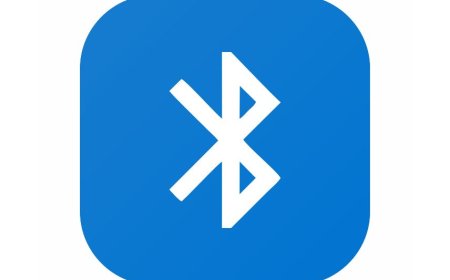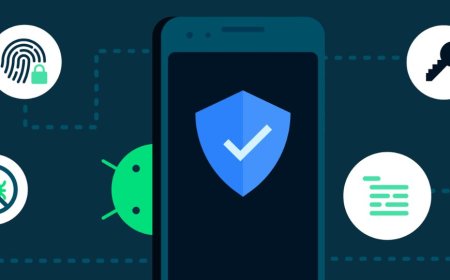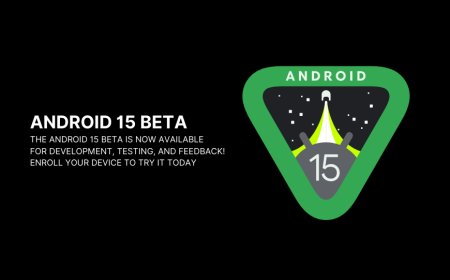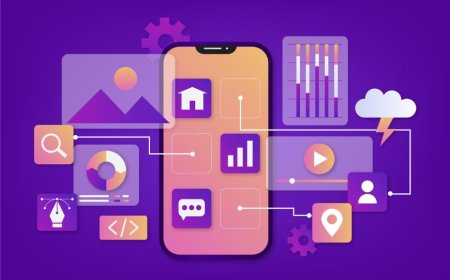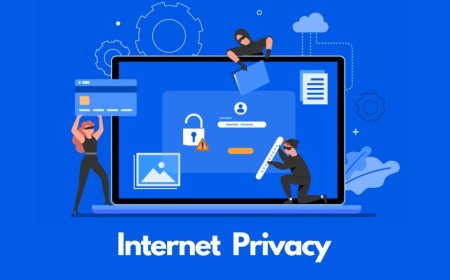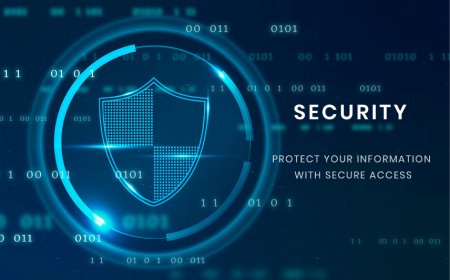Essential Linux Applications: Must-Haves for Users
Looking for the best Linux applications? Look no further! Tectoks offers a curated selection of must-haves to optimize your Linux experience.

Table of contents:
-
Introduction
-
Best Linux Applications
-
Linux Productivity Tools
-
Linux Multimedia
-
Linux Office Suite
-
Linux Tips and Tricks
-
Conclusion
1. Introduction
Linux is a family of operating systems that are based on the Linux kernel, which is a program that manages the communication between the hardware and the software of a computer. Linux is widely used by many users for various purposes, such as web servers, desktops, laptops, smartphones, tablets, embedded devices, and more. Linux is a popular choice for many users because it offers several benefits over other operating systems, such as:
-
Linux is open-source, which means that anyone can access, modify, and distribute the source code of Linux and its applications. This allows users to customize Linux to suit their needs and preferences, as well as contribute to the development and improvement of Linux and its applications.
-
Linux is secure, which means that it is less vulnerable to viruses, malware, and hackers than other operating systems. Linux has a strong permission system that prevents unauthorized access to the system and its files, as well as a built-in firewall that blocks unwanted network traffic. Linux also has a large and active community of users and developers who constantly update and patch Linux and its applications to fix any security issues.
-
Linux is versatile, which means that it can run on a wide range of hardware and devices, from low-end to high-end, from old to new, and from common to rare. Linux can also support multiple file systems, programming languages, and software platforms, making it compatible with many applications and formats.
One of the main advantages of using Linux is the availability of a large number of applications that can perform various tasks and functions. In this blog, we will introduce some of the essential Linux applications that every user should have, regardless of their level of experience or interest in Linux. These applications are divided into four categories: productivity, entertainment, communication, and security. Some examples of these applications are:
-
Productivity: LibreOffice, GIMP, Blender, etc.
-
Entertainment: VLC, Steam, Spotify, etc.
-
Communication: Firefox, Thunderbird, Telegram, etc.
-
Security: Tor, ClamAV, KeePass, etc.
We will discuss each of these categories and applications in detail in the following sections of the blog. Stay tuned and enjoy learning about the amazing world of Linux applications!
2. Best Linux Applications
Linux users have a lot of choices when it comes to applications that can help them with their work, entertainment, communication, and more. However, not all applications are equally suitable for Linux users, as some may have issues with functionality, compatibility, performance, or security. Therefore, it is important to select the best Linux applications that can meet the needs and preferences of Linux users, as well as take advantage of the benefits of using Linux as an operating system.
Some of the criteria that make an application best for Linux users are:
-
Functionality: The application should have all the features and functions that the user requires, as well as be easy to use and reliable.
-
Compatibility: The application should be compatible with the Linux kernel, the user’s hardware, and other applications that the user may use.
-
Performance: The application should run smoothly and efficiently, without consuming too many resources or causing errors or crashes.
-
Security: The application should be secure and protect the user’s privacy and data, as well as be updated and patched regularly to fix any vulnerabilities.
Based on these criteria, here are some of the best Linux applications in different domains that every Linux user should have:
-
Web browser: Firefox is a fast, secure, and customizable web browser that supports many extensions and features, such as private browsing, sync, tab management, and more. Firefox is also open-source and respects the user’s privacy and choice. Download Firefox
-
Media player: VLC is a versatile and powerful media player that can play almost any video or audio format, as well as stream online content, record, convert, and edit media files. VLC is also open-source and cross-platform, making it compatible with many devices and platforms. Download VLC
-
Office suite: LibreOffice is a comprehensive and free office suite that includes applications for word processing, spreadsheets, presentations, databases, and more. LibreOffice is also open-source and compatible with many file formats, such as Microsoft Office, PDF, and ODF. Download LibreOffice
-
Graphics editor: GIMP is a powerful and free graphics editor that can create and edit images, logos, icons, animations, and more. GIMP is also open-source and supports many plugins and tools, such as filters, brushes, layers, and masks. Download GIMP
-
3D modeling and animation: Blender is a professional and free 3D modeling and animation software that can create and render realistic models, scenes, characters, and animations. Blender is also open-source and supports many features and formats, such as sculpting, texturing, lighting, physics, video editing, and game engines. Download Blender
-
Music player: Spotify is a popular and free music streaming service that allows users to listen to millions of songs, podcasts, and playlists online or offline. Spotify is also cross-platform and compatible with many devices and platforms, such as Linux, Windows, Android, iOS, and more. Download Spotify
These are some of the best Linux applications that we recommend you try out. Of course, there are many more applications that you can explore and enjoy on Linux, depending on your needs and interests. We hope that this blog has helped you learn more about the amazing world of Linux applications and inspired you to use Linux more often and effectively. Thank you for reading and happy Linuxing!
3. Linux Productivity Tools
Productivity tools are applications that can help Linux users organize, manage, and complete their goals and tasks more efficiently and effectively. Productivity tools can enhance the user’s workflow, creativity, collaboration, and communication, as well as save time and resources. Linux users have access to a variety of productivity tools that can suit their needs and preferences, as well as take advantage of the benefits of using Linux as an operating system.
Some of the Linux productivity tools in different areas are:
-
Email client: Thunderbird is a free and open-source email client that can handle multiple accounts, folders, filters, and attachments. Thunderbird also supports many features and extensions, such as calendars, contacts, chat, encryption, and more. Download Thunderbird
-
Note-taking app: Joplin is a free and open-source note-taking app that can create and sync notes, to-do lists, images, and files across multiple devices and platforms. Joplin also supports many features and plugins, such as markdown, encryption, web clipper, and more. Download Joplin
-
Task manager: Todoist is a popular and free task manager that can create and track tasks, projects, deadlines, and priorities. Todoist also supports many features and integrations, such as reminders, labels, comments, calendars, and more. Download Todoist
These are some of the Linux productivity tools that we recommend you try out. Of course, there are many more tools that you can explore and use on Linux, depending on your needs and interests. We hope that this blog has helped you learn more about Linux productivity tools and inspired you to use them more often and effectively. Thank you for reading and happy Linuxing!
4. Linux Multimedia
Linux multimedia is a broad term that encompasses the use of various types of media files and formats on Linux operating systems. Multimedia can enhance the Linux user experience and entertainment by allowing them to create, edit, play, and share different kinds of content, such as images, audio, video, animations, etc.
There are many Linux multimedia applications available for different purposes and categories. Here are some examples of them:
-
Image editors: These are applications that allow users to manipulate and modify images, such as cropping, resizing, rotating, applying filters, effects, etc. Some of the popular image editors for Linux are:
-
GIMP: GIMP stands for GNU Image Manipulation Program. It is free and open-source software that offers a wide range of tools and features for image editing, such as layers, masks, brushes, gradients, etc. It also supports various file formats, such as PNG, JPEG, GIF, TIFF, etc. GIMP is considered one of the most powerful and versatile image editors for Linux and other platforms.
-
Krita: Krita is a free and open-source software that is designed for digital painting and illustration. It has a user-friendly interface and a rich set of brushes, textures, patterns, filters, etc. It also supports various color models, such as RGB, CMYK, LAB, etc. Krita is ideal for artists and creative professionals who want to create stunning artwork on Linux.
-
Inkscape: Inkscape is a free and open-source software that is used for vector graphics editing and creation. It has a simple and intuitive interface and a variety of tools and features, such as paths, shapes, text, gradients, clones, etc. It also supports various file formats, such as SVG, PDF, EPS, etc. Inkscape is suitable for graphic designers and web developers who want to create logos, icons, diagrams, etc. on Linux.
-
Audio editors: These are applications that allow users to record, edit, mix, and manipulate audio files, such as trimming, cutting, fading, adding effects, etc. Some of the popular audio editors for Linux are:
-
Audacity: Audacity is a free and open-source software that is widely used for audio editing and recording. It has a simple and easy-to-use interface and a range of tools and features, such as tracks, envelopes, labels, spectrograms, etc. It also supports various file formats, such as WAV, MP3, OGG, FLAC, etc. Audacity is a great choice for podcasters, musicians, and audio enthusiasts who want to work with audio on Linux.
-
Ardour: Ardour is a free and open-source software that is designed for professional audio production. It has a complex and advanced interface and a plethora of tools and features, such as tracks, regions, automation, plugins, etc. It also supports various file formats, such as WAV, AIFF, FLAC, etc. Ardour is ideal for sound engineers, producers, and composers who want to create high-quality audio on Linux.
-
LMMS: LMMS stands for Linux MultiMedia Studio. It is free and open-source software that is used for music creation and production. It has a modern and colorful interface and a lot of tools and features, such as tracks, instruments, samples, effects, etc. It also supports various file formats, such as MIDI, OGG, MP3, etc. LMMS is suitable for beginners and hobbyists who want to make music on Linux.
-
Video editors: These are applications that allow users to edit and manipulate video files, such as cutting, splitting, merging, adding transitions, effects, etc. Some of the popular video editors for Linux are:
-
Kdenlive: Kdenlive stands for KDE Non-Linear Video Editor. It is free and open-source software that offers a comprehensive and flexible solution for video editing and production. It has a user-friendly and customizable interface and a lot of tools and features, such as tracks, clips, timelines, effects, transitions, etc. It also supports various file formats, such as AVI, MP4, MKV, etc. Kdenlive is a powerful and versatile video editor for Linux and other platforms.
-
OpenShot: OpenShot is a free and open-source software that is designed for simple and easy video editing and creation. It has a clean and intuitive interface and a range of tools and features, such as tracks, clips, transitions, effects, etc. It also supports various file formats, such as AVI, MP4, MOV, etc. OpenShot is a good choice for beginners and casual users who want to make videos on Linux.
-
Blender: Blender is a free and open-source software that is mainly used for 3D modeling, animation, and rendering. However, it also has a built-in video editor that allows users to edit and manipulate video files, such as cutting, splicing, masking, adding effects, etc. It also supports various file formats, such as AVI, MP4, MOV, etc. Blender is a complex and powerful piece of software that can be used for video editing and more on Linux.
These are some of the Linux multimedia applications that can help users create, edit, play, and share different kinds of media content on Linux. There are many more applications available for different purposes and categories, such as media players, converters, streamers, etc. Users can explore and try them out according to their needs and preferences.
5. Linux Office Suite
An office suite is a collection of software applications that are designed to perform various tasks related to office work, such as creating, editing, and managing documents, spreadsheets, presentations, databases, etc. An office suite is essential for Linux users, especially for work and education purposes, because it allows them to create and share professional and academic content, collaborate with others, and access various file formats and features.
Some of the Linux Office suite applications in different modules are:
-
Word processing: These are applications that allow users to create and edit text documents, such as letters, reports, essays, etc. Some of the popular word-processing applications for Linux are:
-
LibreOffice Writer: LibreOffice Writer is a free and open-source software that is part of the LibreOffice suite. It offers a comprehensive and flexible solution for word processing, such as formatting, tables, images, charts, etc. It also supports various file formats, such as DOCX, ODT, PDF, etc.
-
WPS Writer: WPS Writer is a free software that is part of the WPS Office suite. It is a fully functional alternative to Microsoft Word, with a similar ribbon interface and features, such as templates, styles, spell check, etc. It also supports various file formats, such as DOCX, WPS, PDF, etc.
-
Google Docs: Google Docs is a web-based software that is part of the Google Drive suite. It allows users to create and edit text documents online, with real-time collaboration and cloud storage. It also supports various file formats, such as DOCX, ODT, PDF, etc.
-
Spreadsheets: These are applications that allow users to create and edit data tables, calculations, graphs, etc. Some of the popular spreadsheet applications for Linux are:
-
LibreOffice Calc: LibreOffice Calc is a free and open-source software that is part of the LibreOffice suite. It offers a powerful and versatile solution for spreadsheets, such as formulas, functions, pivot tables, charts, etc. It also supports various file formats, such as XLSX, ODS, CSV, etc.
-
WPS Spreadsheets: WPS is free software that is part of the WPS Office suite. It is a fully functional alternative to Microsoft Excel, with a similar ribbon interface and features, such as formulas, functions, charts, etc. It also supports various file formats, such as XLSX, WPS, CSV, etc.
-
Google Sheets: Google Sheets is a web-based software that is part of the Google Drive suite. It allows users to create and edit data tables, calculations, graphs, etc. online, with real-time collaboration and cloud storage. It also supports various file formats, such as XLSX, ODS, CSV, etc.
-
Presentations: These are applications that allow users to create and edit slideshows, animations, transitions, etc. Some of the popular presentation applications for Linux are:
-
LibreOffice Impress: LibreOffice Impress is free and open-source software that is part of the LibreOffice suite. It offers a great and flexible solution for presentations, such as templates, layouts, effects, transitions, etc. It also supports various file formats, such as PPTX, ODP, PDF, etc.
-
WPS Presentation: WPS Presentation is a free software that is part of the WPS Office suite. It is a fully functional alternative to Microsoft PowerPoint, with a similar ribbon interface and features, such as templates, layouts, effects, transitions, etc. It also supports various file formats, such as PPTX, WPS, PDF, etc.
-
Google Slides: Google Slides is a web-based software that is part of the Google Drive suite. It allows users to create and edit slideshows, animations, transitions, etc. online, with real-time collaboration and cloud storage. It also supports various file formats, such as PPTX, ODP, PDF, etc.
These are some of the Linux office suite applications that can help users create, edit, and manage various types of office documents on Linux. There are many more applications available for different purposes and categories, such as databases, note-taking, project management, etc. Users can explore and try them out according to their needs and preferences.
6. Linux Tips and Tricks
Linux tips and tricks are useful and clever ways to perform various tasks on Linux systems, such as navigating the file system, managing processes, customizing the appearance, etc. Linux tips and tricks can help Linux users optimize their systems and solve common problems by saving time, improving efficiency, and enhancing productivity.
Here are some of the Linux tips and tricks on different topics:
-
Keyboard shortcuts: These are combinations of keys that can perform certain actions without using the mouse or typing commands. Keyboard shortcuts can help Linux users work faster and easier on the terminal or the graphical interface. Some of the common keyboard shortcuts for Linux are:
-
Ctrl+Alt+T: This shortcut can open a new terminal window, which is useful for running commands and scripts.
-
Ctrl+C: This shortcut can stop the currently running command or process in the terminal, which helps terminate unwanted or unresponsive programs.
-
Ctrl+L: This shortcut can clear the terminal screen, which is handy for removing clutter and making the terminal look neat.
-
Ctrl+Shift+C and Ctrl+Shift+V: These shortcuts can copy and paste text in the terminal, which is convenient for transferring data or commands between different sources.
-
Alt+Tab: This shortcut can switch between different windows or applications, which is beneficial for multitasking and accessing different programs.
-
Terminal commands: These are instructions that can be entered in the terminal to perform various operations on the system, such as creating, deleting, or modifying files and directories, searching for information, installing or removing software, etc. Terminal commands can help Linux users control and customize their systems and solve common problems by using the power and flexibility of the command line. Some of the useful terminal commands for Linux are:
-
Proposal: This command can help Linux users find the correct command for a specific task by searching the manual pages for a keyword. For example, apropos "copy files" can show all the commands that are related to copying files.
-
history: This command can show all the previously executed commands in the terminal, which is useful for reviewing or repeating past actions.
-
PS: This command can show information about the running processes on the system, such as their process ID, status, memory usage, etc. This command can help Linux users monitor and manage the system resources and performance.
-
top: This command can show dynamic information about the system and the processes, such as the CPU load, memory usage, process priority, etc. This command can help Linux users identify and troubleshoot system issues and bottlenecks.
-
find: This command can search for files and directories that match certain criteria, such as name, size, type, etc. This command can help Linux users locate and manipulate the files and directories on the system.
-
System settings: These are options that can be configured to change the appearance and behavior of the system, such as the wallpaper, theme, font, language, etc. System settings can help Linux users personalize and optimize their system and solve common problems by adjusting the system preferences and features. Some of the system settings for Linux are:
-
Display settings: These settings can change the resolution, brightness, orientation, and scale of the display, which can affect the quality and comfort of the viewing experience.
-
Sound settings: These settings can change the volume, output, input, and balance of the sound, which can affect the quality and clarity of the audio experience.
-
Network settings: These settings can change the connection, proxy, VPN, and firewall of the network, which can affect the speed and security of internet access.
-
Power settings: These settings can change the battery, sleep, and suspend modes of the power, which can affect the energy consumption and performance of the system.
-
Privacy settings: These settings can change the lock, history, location, and camera of the privacy, which can affect the protection and confidentiality of personal data and activities.
These are some of the Linux tips and tricks that can help Linux users optimize their systems and solve common problems. There are many more tips and tricks available for different purposes and categories, such as file management, text editing, software installation, etc. Linux users can explore and try them out according to their needs and preferences.
7. Conclusion
In this blog, we have explored some of the essential Linux applications that every user should have on their system. We have covered different categories and modules, such as multimedia, office suite, tips and tricks, etc. We have also provided short descriptions and screenshots of each application, as well as links to their official websites or download pages.
Using Linux applications has many benefits and advantages, such as being open-source, customizable, secure, etc. Linux applications allow users to create, edit, play, and share various types of content, collaborate with others, and access various file formats and features. Linux applications also help users optimize their system and solve common problems by using the power and flexibility of the command line and the graphical interface.
We encourage you to try out the applications and tools mentioned in this blog and see how they can enhance your Linux user experience and entertainment. You can also share your feedback and suggestions with us in the comments section below. We would love to hear from you and learn from your insights and opinions.
Thank you for reading this blog and spending your time and attention with us. We hope you have enjoyed and learned something new from this blog. If you want to read more Linux-related content, please follow our blog and stay tuned for our next posts. We will be back soon with more interesting and useful topics for Linux users. Until then, happy Linuxing!
What's Your Reaction?











